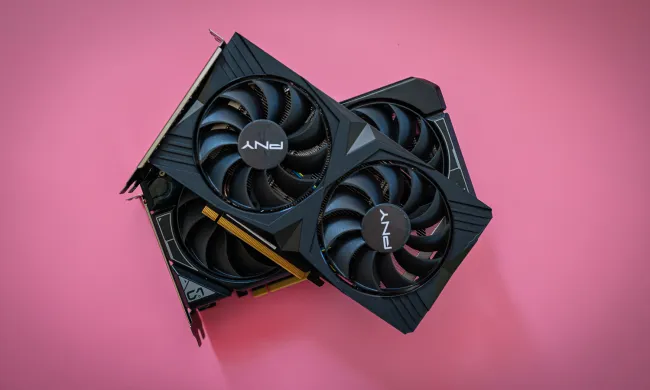Buying a graphics card in 2025 with just 8GB of VRAM is a decision that can quickly backfire. What was once standard for midrange GPUs has now become a major bottleneck in modern games and certain creative workloads, and the limits are showing faster than ever.
This isn’t just about frame rates or clock speeds. As we saw with the recently launched RTX 5060 , 8GB of VRAM holds back long-term performance, especially as games and tools demand more memory. It might work well if you are limited to a 1080p resolution, but in a year or two, it’s likely to turn into a regrettable compromise.
Take Indiana Jones and the Great Circle , a 2024 release that made headlines for its high system requirements. As per testing done by Computer Base , the game chews through VRAM at 1080p using ultra textures, forcing cards like the RTX 4060 and 4060 Ti 8GB to drop frames or crash entirely.
That’s not just limited to a particular title, it’s becoming the new norm. Games like The Last of Us Part I , Hogwarts Legacy , and Alan Wake 2 are similarly harsh on VRAM, especially at higher settings. And no, simply lowering textures doesn’t always “fix” the problem as it can still result in texture pop-in, long asset loading, and a generally compromised experience.
VRAM is the real limiting factor
The conversation around GPU performance often fixates on frames per second, but in 2025, VRAM capacity is increasingly the thing separating playable experiences from broken ones. When modern game engines request more than your card can handle, it results in poor performance including stutters and crashes.
It doesn’t matter if your 8GB GPU technically has enough shader power, it becomes a glorified bottleneck.
Worse still, newer cards with 8GB are often misleadingly marketed. Nvidia’s RTX 5060 and 5060 Ti (8GB variants) look appealing on paper, with Blackwell efficiency and support for DLSS 4 with multi-frame generation . But when they choke on big textures or fail to keep up in open-world games, the real-world experience often falls short.
AMD hasn’t been much better. Recent cards like the RX 9070 XT and 9060 XT do bump up to 16GB, but the 8GB RX 9060 XT and even older options like the RX 7600, 6600 XT, and 6650 XT still populate store shelves with 8GB VRAM and tempting discounts.
False economy in 2025
It’s easy to think you’re saving money by buying an 8GB card, but that short-term gain quickly erodes. As games become more demanding and AI workloads become more memory-intensive, you’ll end up running into performance walls sooner than you’d expect. That leads to either compromises like dropping settings or resolution, or spending more to replace your GPU sooner than planned.
If you’re buying a card in 2025, aim for at least 12GB of VRAM, preferably 16GB if you want the system to stay relevant for 3–4 years. Cards like the RTX 5060 Ti (16GB), RTX 5070 (12GB), RX 9060 XT (16GB), and even some budget 7700 XT (12GB) models offer a far better long-term experience, even if they’re a bit more expensive.
Exceptions to the rule?
Despite the growing irrelevance of 8GB GPUs in modern AAA gaming, there are still select scenarios where these cards make sense, provided the buyer understands their limitations. Esports titles like Valorant, League of Legends, and Counter-Strike 2 remain light on VRAM requirements and are designed to run at high frame rates even on modest hardware.
For gamers who stick to 1080p resolution and play older or well-optimized games, 8GB cards can still deliver decent results.
Similarly, budget-constrained builders, those with less than $300 to spend on a GPU, may find that 8GB cards are their only option unless they opt for second-hand GPUs with higher VRAM but lower efficiency and weaker features.

There are also workloads where VRAM isn’t the primary bottleneck. Media-centric systems, such as HTPCs or dedicated streaming rigs, can benefit from the video encode/decode capabilities of modern 8GB cards, especially if AV1 support or low power draw is a priority. Small form factor (SFF) builds or compact office PCs often can’t accommodate large or high-wattage GPUs, and in such contexts, a compact 8GB card may be the most practical choice.
Some users also rely on cloud services like GeForce Now or Adobe’s AI-based rendering tools, where the heavy lifting is offloaded to remote servers. In these hybrid workflows, the local GPU serves more as a bridge than a workhorse, making an 8GB card a tolerable, if not an ideal solution.
These use cases won’t apply to everyone, but they do highlight that there’s still a narrow but valid market where 8GB GPUs haven’t been completely left behind.
Final thoughts
The writing is on the wall: 8GB GPUs are no longer a smart buy in 2025. Between games that already exceed that memory envelope and hardware cycles moving quickly toward more demanding workloads, buying an 8GB card today is like buying a smartphone with 64GB of storage.
It technically works, but you’ll regret it the moment you use it in the real world. If you want to build a PC that lasts, gives consistent performance, and doesn’t force you to dial back settings in every new game, skip the 8GB options. It’s no longer enough.




